“The nation needs to return to the colonial way of life, when a wife was judged by the amount of wood she could split.”
– W.C. Fields, comedian
It’s been a couple of weeks since our last step-by-step recipe for pejerrey, and it’s time for another. I’m not sure why this particular recipe is “colonial” style – in fact, the recipe for pejerrey a la colonial and merluza a la colonial (silverside and hake, respectively), are completely different, the latter being fish cooked in herb infused milk which is then thickened with walnuts and bread after the fish is removed, versus this recipe, which is, essentially, a classic mustard cream sauce (and, by the way, delicious served on vegetables, fish, chicken, meat… whatever – leave out the fish step and just use this as a reference for how to make a top quality mustard cream sauce). Interestingly, these seem to be the only two “a la colonial” recipes in the Spanish language canon – perhaps they truly are leftover recipes from the Spanish colonial period…?
Hey, pretty soon I’m going to have enough pejerrey recipes to go head to head with David Rees’ Kale City concept on The Next Great American Restaurant. Hey Bobby, Curtis, Lorena, Steve – wanna invest in El Rey del Pejerrey?
Pejerrey a la Colonial
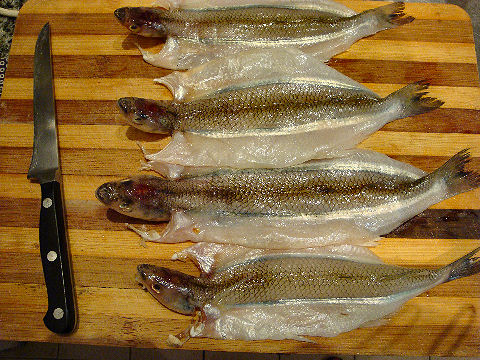
Just a reminder that those fillets we’ve been playing with really do start out as fish.
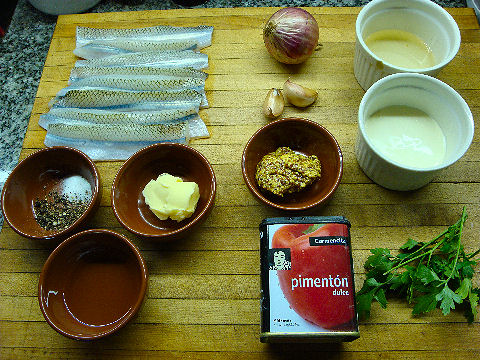
Our mise en place – filleted pejerreys, olive oil, butter, salt and pepper on the left; on the right a small onion (I only had red in the house of small ones, the classic recipe doesn’t specify, but I’d assume it’s normally just a typical brown onion), garlic, mustard (didn’t specify, I like stone ground seeded), white wine, cream, sweet paprika and parsley.
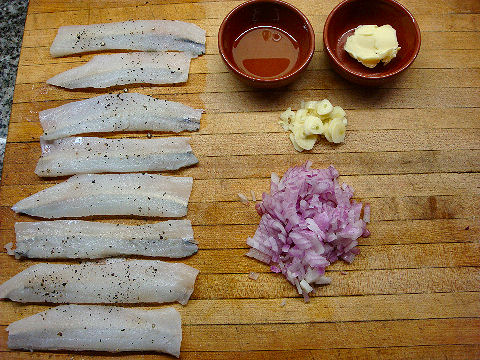
Salt and pepper the fillets on the flesh side. Peel and thinly slice the garlic, finely chop the onion.
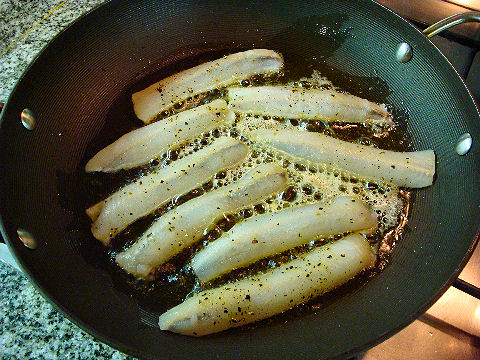
Over high heat get the olive oil and butter bubbling away. Why both? A common question and a common restaurant approach to cooking – the olive oil helps prevent burning and lightens the dish a little, and the butter, in smaller quantity than the oil, helps the food turn that lovely golden color quicker, so that it doesn’t overcook while browning. Add the fillets skin side down and cook for two minutes…
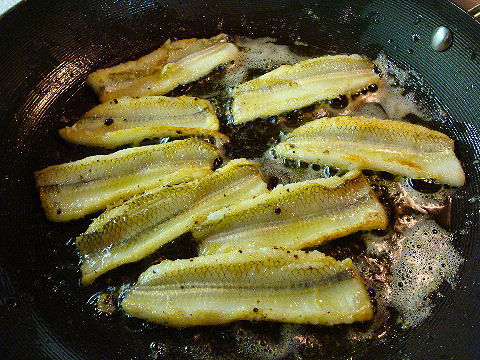
…then flip them and cook two minutes on the other side. Remove to a plate with some paper towel to blot off the excess oil and then slip them onto a pre-warmed in the oven at low temperature.
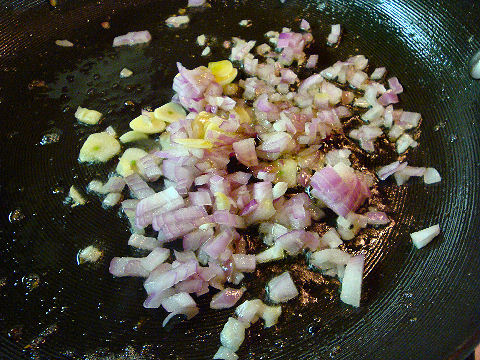
It’s likely there will still be a fair amount of oil/butter in the pan – use your judgment, you only need a nice coating on the bottom of the pan so the onions and garlic don’t stick – I poured off about half of what was in the pan. Saute the onions and garlic until soft and just starting to color – about 2-3 minutes – we’re still over high heat here.
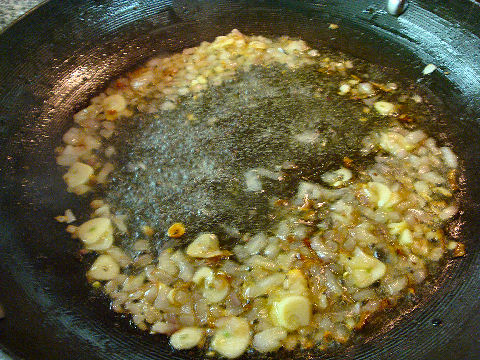
Add the white wine – a good amount, I probably used about half a cup. Cook until it more or less evaporates, stirring regular so that the onions and garlic absorb that nice vinous flavor.
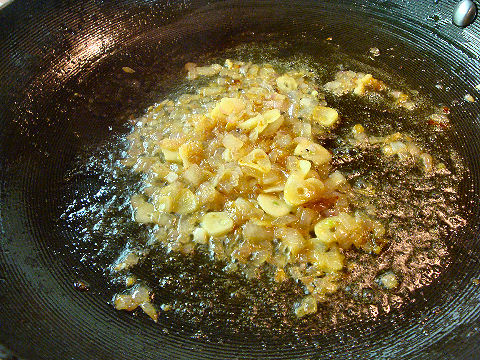
This is how it will basically look when the wine is gone – the liquid left in the pan is almost like a glaze.
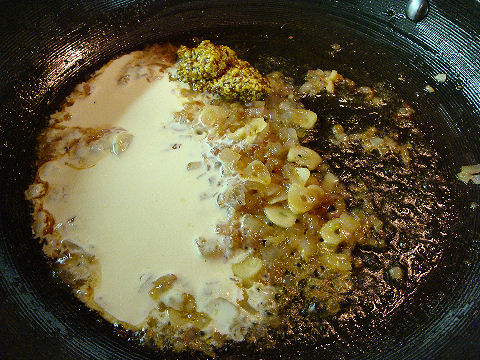
Turn the heat down to the lowest it goes and add the mustard and cream. Stir to blend well and heat through, but you don’t want it to come back to a boil – the residual heat in the pan is probably enough to do the job even if you took it off the flame.
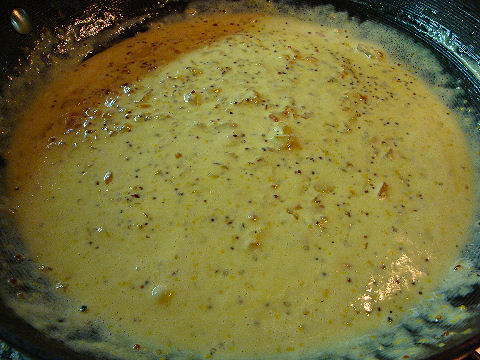
The sauce should be nice and smooth and of a medium thickness, more or less like a good gravy. Adjust the salt and pepper if needed, to taste.
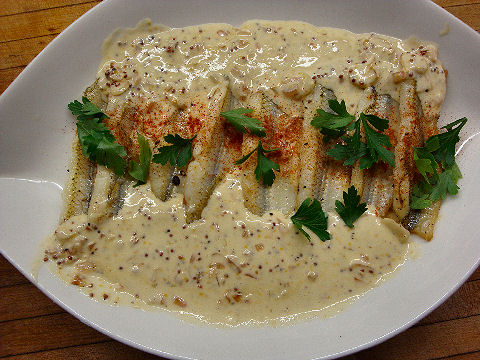
Remove your warm plate with the fillets from the oven, spoon the sauce along the sides. Sprinkle the fish with a little sweet paprika and garnish with some parsley leaves.
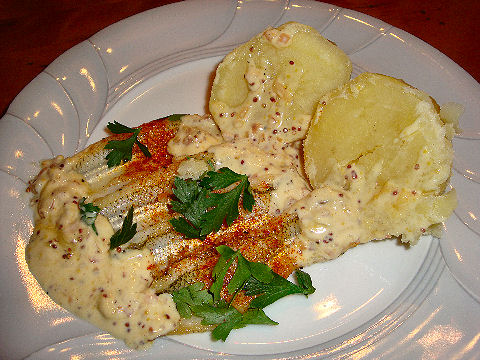
Although no particular accompaniment is recommended in any of the recipes I saw, we’re big fans of boiled potatoes, and hey, mustard cream sauce and a boiled potato? Doesn’t sound bad at all to me. Dish it up and enjoy!
I tried this with tilapia, as that is what I had, and it was delicious. Definitely my default sauce for fish from now on.
Cool! Glad it worked. It is pretty darned delicious – and a pretty classic French sauce. Argentina, as best I know, was never French colonial… so go figure.
[…] to recipes as I blog them: a la Romana; con Salsa Rosada; Rellenos; a la Colonial; Ceviche; Cured; Papillote with Vegetables; […]
[…] Two classes this last week, one where a trio of students made both beef and mushroom empanadas, pejerrey a la colonial, and humita en la olla (a stew of coarsely grated corn, green onions, squash, chilies and cheese); […]